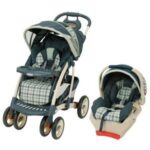A booster seat law is in effect in all 50 states. Yet even the motorist who is well aware of the state’s laws about safely transporting children in the backseat, may not be up to par on the booster seat requirements set forth by their manufacturers. Are you?
Child Booster Seat Laws Affect All States
The Governors Highway Safety Association has answers for the motorist who is unsure what the law of the land might be in an individual state. The listing takes into account recent changes to state law, such as California’s new booster seat law that makes these devices mandatory for children until the age of eight.
Ease of Use Varies by Model
User error jeopardizes booster seat safety. While the seats must meet federal safety standards, the same cannot be said for ease of installation or daily use. The National Highway Traffic Safety Administration has evaluated booster seats for ease of use. The resulting child safety seat ease of use ratings reflect an evaluation of the instructions that come with the seat, the label that offers installation tips, the ease of securing the child, and other backseat installation difficulties. One low-rated booster seat — the Sunshine Kids Santa Fe — was faulted for failing to label the belt routing path, attaching the manual in an odd location, and for failing to match model numbers on labels and in written instructions. Even a highly rated model, such as the Magna Clek Oobr — received some demerits for not labeling the belt path or providing illustrations.
Backless vs. the High Back Booster Seat
Safer Car urges motorists to opt for a high back booster seat, if a vehicle “has a low seat back.” Since the low back of seat does not provide adequate head support to the child in the case of a crash, the high back booster seat makes up for the deficiency and provides the required head support. If the back of the seat does offer this kind of support, then it is safe to use a backless booster seat.
Additional Booster Seat Safety Issues: Height and Weight of Children
Weight is among the more frequently overlooked booster seat requirements. Since the booster seat law varies by state, and since plenty of manufacturers market their seats across the nation, it makes sense that what is adequate in one state (where the age requirement ends at six) will not work in another (where children up to eight years of age must ride in boosters).
For example, the previously mentioned Sunshine Kids Santa Fe seat supports riders between 30 pounds and 120 pounds. It accommodates children between 38 inches and 63 inches in height. The Magna Clek Oobr only accommodates children weighing between 33 pounds and 100 pounds, and limits height to a range between 38 inches and 57 inches. A motorist must ensure that the children riding in the backseat booster fit the weight and height requirements set forth by seat manufacturers.



